Temporarily Unmown Grass Strips – A Hope for Productive Meadow Insects?
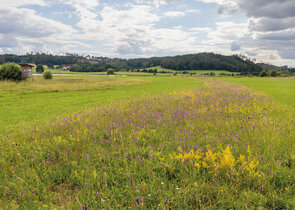
The agri-environmental-climate measures (AECM) announced by the Ministry of Agriculture of the Czech Republic are intended to support management methods mitigating the negative effects of intensive farming on the landscape and its inhabitants, including insects. Despite their productive nature, permanent grasslands are an important landscape component hosting a wide range of invertebrates. The right balance of production practices and compensatory measures can make a significant contribution to maintaining the diversity of grassland organisms and the ecosystem services they provide. The Nature Conservation Agency of the Czech Republic (NCA CR) has therefore commissioned a study on the effects of temporarily unmown grass strips on the diversity and abundance of meadow organisms. The aim of the study was to verify whether the retained parts of grass stands have a positive effect on the biota on common managed meadows of various sizes.
Nature Conservation 2022 — 25. 5. 2022 — Research, Surveys and Data Management — Print article in pdf
Shall We Go for Krkonoše/Giant Mts. Black Grouses with a Computer?
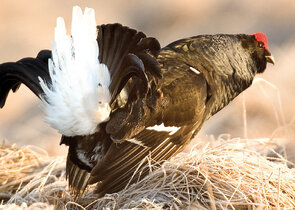
Yes, this is possible. Although computer modelling will not save the Black grouse, its outputs can significantly help in planning various practical measures in the field, regulating tourists at high-risk sites, and educating visitors. Habitat modelling, which uses the possibilities of geo-information technologies, remote sensing data, and advanced spatial analysis methods (e.g. Hirzel & le lay 2008, ElitH & leatHwick 2009), is applied significantly in the study of ecological requirements of (not only) animal species. These methods, technologies, and data allow extensive analyses of the relationships between the occurrence of species of interest and relevant environmental factors (e.g. Franklin 2010, Guisan et al. 2017). A common approach is to model the current or potential occurrence of species (e.g. tHuiller et al. 2004, Hirzel et al. 2006, Basille et al. 2008); the aim is to determine the landscape potential for their perma- nent or temporary occurrence and to evaluate the significance of individual environmental factors for their spatial expansion. Thus, habitat modelling is currently one of the most widely used approaches in conservation biology (e.g. Huck et al. 2010, Basille et al. 2013, Guisan et al. 2013).
Nature Conservation 2022 — 25. 5. 2022 — Research, Surveys and Data Management — Print article in pdf
How We Do (not) Implement the Water Framework Directive in Improving the Morphological Status of Wat
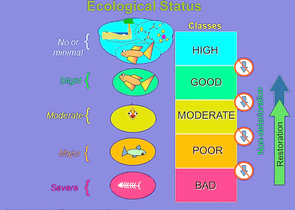
Data show that, in the 1990s, 28.4% of the total length of the Czech Republic’s watercourses were unfavourably modified, which is tens of thousands of kilometres of the river network. According to the current National Biodiversity Strategy of the Czech Republic, the country’s current optimistic targets are at least 300 km of restored watercourses for the 2016–2025 period. The status of watercourses and related floodplains has therefore not seen any significant improvement since the 1990s. Compared with biological and physical/chemical quality elements, monitoring and enhancement of the morphological status of the country’s watercourses has enjoyed a less significant position in the long term. However, apart from the “aesthetical” point of view, its improvement is also of unquestionable importance in terms of water retention in the landscape, flood protection, and drought management. It is therefore a topical issue in society.
Nature Conservation 2021 — 10. 6. 2021 — Research, Surveys and Data Management — Print article in pdf
The Latest Epigraphic Research Has Shifted back the Age of the Oldest Cave Drawing Traces in the Cze
Since 2016, epigraphic research has been carried out in the caves of the Moravský kras/Moravian Karst (South Moravia), with the participation of the Cave Administration of the Czech Republic (CACR), Palacký University Olomouc (PU), and the Nuclear Physics Institute of the Czech Academy of Science Prague (NPI CAS). In 2019, the surprising results of radiocarbon dating of some black charcoal drawing traces in the Kateřina Cave had revealed them to be of prehistoric age (approx. 6,300 years). For more details, see Ochrana přírody/Nature Conservation Journal, 74, 5, 39-41, 2019. During detailed documentation of these objects, some other interesting clusters of lines and shapes were discovered there. Analysis of one of them revealed that they are even older, namely more than 7,000 years.
Nature Conservation 2021 — 10. 6. 2021 — Research, Surveys and Data Management
Assessing Clogging the Dobroměřice Fishpond by Sediments
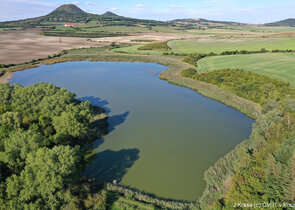
Particularly in farmland, there are consequences of erosion and soil transportation into watercourses and further to fishponds and water reservoirs. How to correctly assess the current state of a river basin/catchment areas and of a reservoir and to identify the sources of pollution? Therefore, for proposing appropriate conservation measures both in the landscape and directly on watercourses, mathematical modelling can be successfully combined with Geographic Information Systems (GIS), remote sensing and photogrammetry.
When surveying a site, archive data of aerial photography it is a good resource, and Unmanned Aerial Vehicles (UAVs) or drones are useful, both for making overview images and for photogrammetric processing of a ortophotomaps, or of a detailed surface model
Nature Conservation 2021 — 10. 6. 2021 — Research, Surveys and Data Management — Print article in pdf
Sixty Years of History of State Nature Conservation Organisations in the Czech Republic

The so-called ‘Eight’ year (2018) was significant not only for several anniversaries in Czech statehood (1918, 1938, 1948, 1968), but also for nature protection. The foundation of our oldest forest reserves, Žofín Forest (1838) and Boubín Forest (1858), was commemorated by the Year of Czech Primeval Forests.1 The anniversary of the founding of the first national professional state institution for nature conservation in 1958 remained somewhat in their shadow. After 1989, the overall preparedness of nature conservation institutions helped to enforce rapid changes in the environment and to establish modern legislation and nature conservation management in the Czech Republic.
Nature Conservation 2020 — 25. 3. 2020 — Research, Surveys and Data Management — Print article in pdf
Monitoring of Alpine Bells in the Macocha Abyss

Alpine bells (Cortusa matthioli subsp. moravica Soják) is undoubtedly one of the most famous plants of the Moravian Karst, even though very few people have ever seen it. This is because it grows in the Macocha Abyss, high on the vertical rock walls. Access to the habitat is very difficult and only possible with the help of ropes and for physically fit people with the necessary experience. Previously, part of the Alpine bells population also occurred on the debris cone at the bottom of the Abyss, from where it was first described. However, only three specimens now survive here.
Nature Conservation 2020 — 25. 3. 2020 — Research, Surveys and Data Management — Print article in pdf
Červenohorské sedlo mountain pass:

The west-east oriented main ridge of the Jeseníky Mountains is an important migration barrier for flying animals. The remarkable col of the Červenohorské sedlo mountain pass, visible from afar, allows them to cross this barrier with less effort than if they flew over the Jeseníky ridges, and it is no wonder that especially during the autumn migration a huge number of birds, bats and various groups of migratory insects are funnelled into the relatively narrow corridor of the saddle. Since 2010, this site has been used for monitoring of migratory birds, to which the monitoring of the passage of bats and selected groups of migratory insects has been added in recent years. Especially in connection with bird migration, this is currently the largest research project in the Czech Republic and is the only locality where birds can be observed under appropriate conditions during both daytime and night-time migrations.
Nature Conservation 2020 — 25. 3. 2020 — Research, Surveys and Data Management — Print article in pdf
Records of Animals Admitted to the National Network of Rescue Stations and What They Can Tell Us

The National Network of Rescue Stations project brings, in addition to thousands of saved lives of wild animals and effective information for the education of inhabitants, also interesting statistics. The central register of all animals received not only allows the monitoring of numbers of species and individuals of injured animals and the dates and locations, but also their fate – reasons why the injury occurred, time when they were admitted, number of days spent at the station, etc. Up to 57 data items can be recorded for each animal received. The long-term uniform methodology of record-keeping also enables the monitoring of these parameters over the years.
Nature Conservation 2020 — 25. 3. 2020 — Research, Surveys and Data Management — Print article in pdf
P. Lustyk, V. Oušková, L. Kratochvílová & K. Chobot: 2013 Report on the Conservation Status of Natur
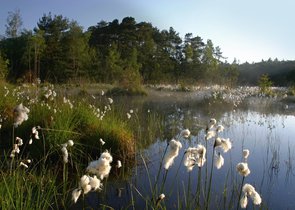
In 2013, pursuant to Council Directive 92/43/EEC on the conservation of natural habitats and of wild fauna and flora, as amended later, commonly known as the Habitats Directive, the Czech Republic as a European Union Member State submitted an assessment report on natural habitats.
Nature Conservation 3/2014 — 24. 8. 2014 — Research, Surveys and Data Management — Print article in pdf

